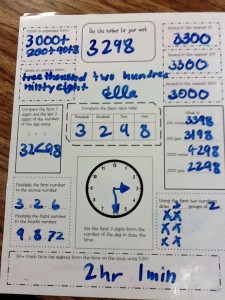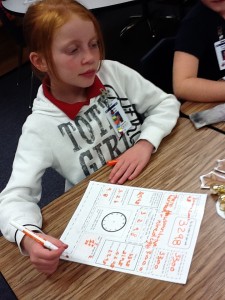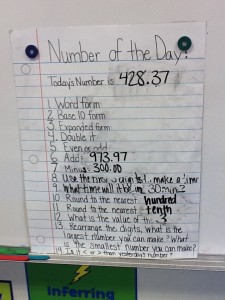Quest Teacher's Lounge
A Place for Sharing, Inspiring and Learning
Go on a Treasure Hunt in our Quest Library!The Quest Academy Library is a treasure trove of teaching resources that is yet to be explored by many of us.I took a little tour of the audio/video section and found some great items to enhance your science and social studies lessons. We get used to looking on the internet for short videos that can enhance our lessons but remember that our very own library has some excellent videos with teacher guides, vocabulary, focus questions and activities. I previewed the Clouds video and found that there is a website you can go to for a cloud experiment. How cool is that? Just attach the activity to your blog and you have a great activity for your students to try at home. Remember that the science topics are grade specific so please do not show a video just to show it —Make sure it goes with your grade level curriculum. Here is just a small sample of the videos available in the Quest Library — The Civil War is a book with an interactive CD with an hour of video. It is located in the Junior High library and is more appropriate for our older students.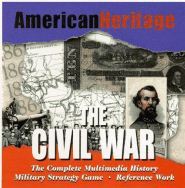 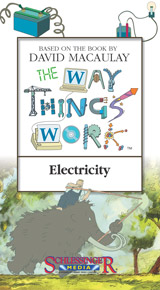  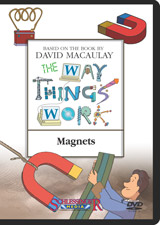  Great for Habitats! Great for Habitats!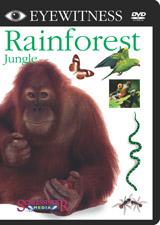 There are even a few for our English/Language Arts teachers!
There are even a few for our English/Language Arts teachers!
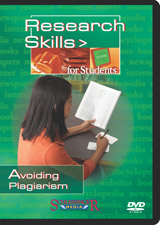 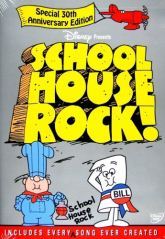 
 And one of my favorite video series is America: The Story of Us. And one of my favorite video series is America: The Story of Us.
 I know how busy our teachers are, but it a trip to the library is really worth the effort. Little treasures of information are waiting to be explored! If you can not find what you need just send out an email to Mrs. Erni or Mrs. Baggaley. They are so knowledgeable and ready to help. I know how busy our teachers are, but it a trip to the library is really worth the effort. Little treasures of information are waiting to be explored! If you can not find what you need just send out an email to Mrs. Erni or Mrs. Baggaley. They are so knowledgeable and ready to help.Dr. Seuss Week is off to a great start……What is your favorite Dr. Seuss story?
I have to go with Horton Hears a Who —- my son and I read it over and over and my heart melts when I see that bright orange cover. And of course there’s the profound lesson to be learned by reading this tale —- “A person’s a person, no matter how small.”
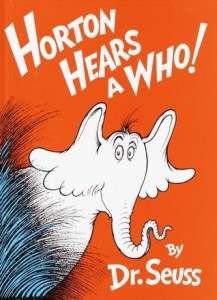 Leave me a comment and let’s see what books are popular with our Quest teachers. One vote for HORTON!
Leave me a comment and let’s see what books are popular with our Quest teachers. One vote for HORTON!
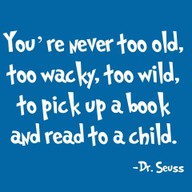 The Mayberry Style of Teaching History – It’s all in the delivery!
This is a classic…… If you have a student (or maybe more than one) that thinks history is boring just share this little video and you’ll quickly change their minds. It’s all in the delivery!
I have been reading a great little book over the last few weeks and it has reinforced the need for teachers who love their subject matter and really want their students to look forward to coming to class to see what will happen each day.
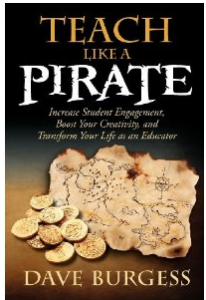 The book Teach Like A Pirate is full of great examples of how you can make your lessons come to life for both you and your students. We all have a job to do in delivering information to our students but it doesn’t have to be dry and boring with the teacher standing at the podium and the students nodding off to sleep. Here is an excerpt from the book –
To succeed in business, you must position yourself in the marketplace so you are the clear choice amongst all alternatives and against the alternative of doing nothing at all. This is exactly what we must do as teachers, as well! Why should our students bother to learn what we are teaching? Why should they bother to give us their attention and active engagement in the first place? Because here’s the truth: Not only are we fighting to stand out from all the images, sounds, products, people, and emotions vying for their attention, we are also fighting to keep them from tuning out altogether. It isn’t easy. There’s a lot of noise out there and let’s face it, it’s hard for our subjects to compete with the excitement of their favorite reality show or real-life drama in the halls. It’s easy to see why so many teachers use what I call “the medicine approach.” They say, “I know this stuff is hard but you have to bear with me and hang in there because it’s on the test.” “I know this is rough going and not exactly fun but if you don’t learn this stuff you can’t be successful at the next level.” Talk about piss-poor motivation! Suffer through this grueling ordeal so that you can answer a few more questions right on the state test. They are positioning their lesson like it is bitter medicine that must be swallowed in order to get better. Don’t position your material as if it is awful-tasting medicine! Position your content as if it’s amazing! Give motivating reasons why the material is important to know. “Because it’s on the test” doesn’t cut it. If you can’t explain why someone should pay attention to what you’re saying, maybe you shouldn’t be saying it. I go out of my way to position my class as an amazing and extraordinarily unique place filled with outrageously engaging content and activities. I position it as a place that provides opportunities for creative expression. I also try to position each lesson so students can personalize the material and apply it to their world. I add in the LCLs (life-changing lessons) in an attempt to make my class fulfilling and meaningful. Then, when appropriate, I add in the entertainment and fun factor to top it all off. I design my lessons so that even the tough material goes down easy, much like the pet owner who hides the pill inside of a tasty morsel. And I don’t apologize for utilizing all of the tricks of the trade to accomplish my goals. Sometimes we need to change our students’ perceptions of the material we’re teaching. The way to do this is called reframing. Reframing involves providing a new context for the material that helps to break down the negative associations many students come into class with. I’m sure you’ve heard students saying things like, “I hate math.” “History is boring.” “I can’t write.” “I’ll never need to know this in real life.” These are some of the preconceived notions our students bring with them to school. Our job is to create a mental paradigm shift by reframing the content and its value and relevancy to their lives. The truth is, students probably don’t really hate math, they hate the way it has been taught to them in the past. They hate the fact that they have struggled to learn math in the past. They think history is boring because a teacher somewhere along the way killed it with dreary bookwork, worksheets, and monotonous lectures. History isn’t boring, their history class was. When students can’t see any real-world connection or value to a particular subject, they question whether it is worth the investment and effort. And rightly so! As adults, we don’t like to feel that our time and efforts are being wasted; students are no different. The following story is my favorite example of the power of reframing. When my son was about five or six years old, I took him to a pizza place with two other families. It was one of those places with a small game area for children. This one also had about five of those gumball-type vending machines that spit out prizes (stickers, small toys, temporary tattoos, etc.) rather than gum. My son, Hayden, and two of his buddies approached the machines excitedly with quarters in hand. The first friend put his money in and got a small, plastic, glow-in-the-dark T-Rex. He ran off displaying it proudly and making loud roaring noises as he went. The second friend pulled the lever and got a temporary tattoo of a fire-breathing dragon. He grabbed his father and dragged him into the bathroom to immediately apply it to his arm with water from the sink. Finally, Hayden approached the machines and carefully chose where to place his quarters. He pushed and pulled and out came a small plastic capsule with something inside. He handed it to me to pry the top off and out came a small gold bracelet with heart charms. Disaster!! I knew I had about a half second to reframe this experience for my son or there could be a legendary meltdown. After all, a heart bracelet is a devastating prize for a young boy when compared to a T-Rex and a fire-breathing dragon tattoo. I’m not always so quick on my feet in such circumstances, but this time, without any hesitation, I held it up, pointed to it, and emphatically yelled, “Pirate treasure!!!” He grabbed it from me and ran off clutching it yelling, “Yeaaahh!!” at the top of his lungs. That is reframing. Sometimes the most important thing we do as teachers is to take subjects, which to a lot of our students start as the equivalent of little heart bracelets, and by using passion, enthusiasm, powerful presentations, and creativity, turn it into pirate treasure.
Burgess, Dave (2012-10-22). Teach Like a PIRATE: Increase Student Engagement, Boost Your Creativity, and Transform Your Life as an Educator The book Teach Like A Pirate is full of great examples of how you can make your lessons come to life for both you and your students. We all have a job to do in delivering information to our students but it doesn’t have to be dry and boring with the teacher standing at the podium and the students nodding off to sleep. Here is an excerpt from the book –
To succeed in business, you must position yourself in the marketplace so you are the clear choice amongst all alternatives and against the alternative of doing nothing at all. This is exactly what we must do as teachers, as well! Why should our students bother to learn what we are teaching? Why should they bother to give us their attention and active engagement in the first place? Because here’s the truth: Not only are we fighting to stand out from all the images, sounds, products, people, and emotions vying for their attention, we are also fighting to keep them from tuning out altogether. It isn’t easy. There’s a lot of noise out there and let’s face it, it’s hard for our subjects to compete with the excitement of their favorite reality show or real-life drama in the halls. It’s easy to see why so many teachers use what I call “the medicine approach.” They say, “I know this stuff is hard but you have to bear with me and hang in there because it’s on the test.” “I know this is rough going and not exactly fun but if you don’t learn this stuff you can’t be successful at the next level.” Talk about piss-poor motivation! Suffer through this grueling ordeal so that you can answer a few more questions right on the state test. They are positioning their lesson like it is bitter medicine that must be swallowed in order to get better. Don’t position your material as if it is awful-tasting medicine! Position your content as if it’s amazing! Give motivating reasons why the material is important to know. “Because it’s on the test” doesn’t cut it. If you can’t explain why someone should pay attention to what you’re saying, maybe you shouldn’t be saying it. I go out of my way to position my class as an amazing and extraordinarily unique place filled with outrageously engaging content and activities. I position it as a place that provides opportunities for creative expression. I also try to position each lesson so students can personalize the material and apply it to their world. I add in the LCLs (life-changing lessons) in an attempt to make my class fulfilling and meaningful. Then, when appropriate, I add in the entertainment and fun factor to top it all off. I design my lessons so that even the tough material goes down easy, much like the pet owner who hides the pill inside of a tasty morsel. And I don’t apologize for utilizing all of the tricks of the trade to accomplish my goals. Sometimes we need to change our students’ perceptions of the material we’re teaching. The way to do this is called reframing. Reframing involves providing a new context for the material that helps to break down the negative associations many students come into class with. I’m sure you’ve heard students saying things like, “I hate math.” “History is boring.” “I can’t write.” “I’ll never need to know this in real life.” These are some of the preconceived notions our students bring with them to school. Our job is to create a mental paradigm shift by reframing the content and its value and relevancy to their lives. The truth is, students probably don’t really hate math, they hate the way it has been taught to them in the past. They hate the fact that they have struggled to learn math in the past. They think history is boring because a teacher somewhere along the way killed it with dreary bookwork, worksheets, and monotonous lectures. History isn’t boring, their history class was. When students can’t see any real-world connection or value to a particular subject, they question whether it is worth the investment and effort. And rightly so! As adults, we don’t like to feel that our time and efforts are being wasted; students are no different. The following story is my favorite example of the power of reframing. When my son was about five or six years old, I took him to a pizza place with two other families. It was one of those places with a small game area for children. This one also had about five of those gumball-type vending machines that spit out prizes (stickers, small toys, temporary tattoos, etc.) rather than gum. My son, Hayden, and two of his buddies approached the machines excitedly with quarters in hand. The first friend put his money in and got a small, plastic, glow-in-the-dark T-Rex. He ran off displaying it proudly and making loud roaring noises as he went. The second friend pulled the lever and got a temporary tattoo of a fire-breathing dragon. He grabbed his father and dragged him into the bathroom to immediately apply it to his arm with water from the sink. Finally, Hayden approached the machines and carefully chose where to place his quarters. He pushed and pulled and out came a small plastic capsule with something inside. He handed it to me to pry the top off and out came a small gold bracelet with heart charms. Disaster!! I knew I had about a half second to reframe this experience for my son or there could be a legendary meltdown. After all, a heart bracelet is a devastating prize for a young boy when compared to a T-Rex and a fire-breathing dragon tattoo. I’m not always so quick on my feet in such circumstances, but this time, without any hesitation, I held it up, pointed to it, and emphatically yelled, “Pirate treasure!!!” He grabbed it from me and ran off clutching it yelling, “Yeaaahh!!” at the top of his lungs. That is reframing. Sometimes the most important thing we do as teachers is to take subjects, which to a lot of our students start as the equivalent of little heart bracelets, and by using passion, enthusiasm, powerful presentations, and creativity, turn it into pirate treasure.
Burgess, Dave (2012-10-22). Teach Like a PIRATE: Increase Student Engagement, Boost Your Creativity, and Transform Your Life as an Educator
It’s all in the delivery…..add a little energy to your teaching and see how your students react!Tags : teaching Differentiating – Are you up to the challenge?One of the most impressive qualities of Quest Academy is the focus on differentiation. Our goal is to instruct every student on the level that is appropriate for productive learning. This is really a daunting task for our teachers. I came across a great article on the Reading Rockets website all about why differentiation is successful and I wanted to share it! It is short and sweet and you can read it here. The article is about reading but we can apply it to all subject areas.Guided Reading is one of the best ways our teachers have been able to differentiate in our elementary classes. Meeting with small groups to focus on specific skills is a proven strategy for reading success. Knowing what to do at each reading level is important. Check out this handout I found – I am sorry that I can not recall who to credit with this great reference.This is a big help for all of the reading teachers but what about the other subject areas? How are we doing at DIfferentiation in Math, Science, Social Studies and Writing? What are some of your strategies? Over the next few days take some time to reevaluate your lessons and how you are meeting the needs of your students. What are you doing for those students not meeting your benchmarks? Don’t let anyone fall through the cracks……. set up a new tutoring group, add educational videos to your blog for your students to access while working at home, adapt assignments for struggling students and keep updated and accurate records. Let’s rise to the challenge of differentiating for every learner!Tags : differentiation, guided reading Ways to enhance your Persuasive Writing lessons—Persuasive writing can be a real challenge to teach and as the time for the writing assessments draws closer we need to find different ways to help our students understand the process and ignite their creative thinking. One way we can show great examples of persuasive writing is by sharing some fun and entertaining picture books. There are some great books out there that can be super models of persuasion. Here are a few books to check out and read to your class before you start your writing lessons.1. I Wanna Iguana by Karen Orloff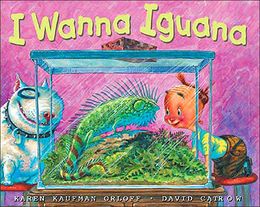 I am sure that many teachers have read this book to their students for the shear entertainment value but it can serve as a great introduction to the concept of persuasion. A child writes letters to his mother to convince her that he really should have an iguana. I am sure that many teachers have read this book to their students for the shear entertainment value but it can serve as a great introduction to the concept of persuasion. A child writes letters to his mother to convince her that he really should have an iguana.
2. I Wanna New Room by Karen OrloffA follow up book by the same author.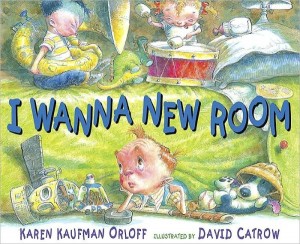
3. Hey, Little Ant by Phillip Hoose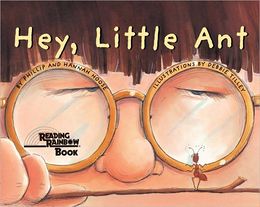 A great example of the art of persuasion as a little ant tries to convince a young boy not to squish him. This book ends without telling you if he got squished so your students can have fun debating the outcome. A great example of the art of persuasion as a little ant tries to convince a young boy not to squish him. This book ends without telling you if he got squished so your students can have fun debating the outcome.
4. My Brother Dan’s Delicious by Steven Layne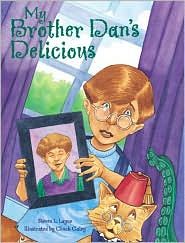 So funny! A young boy tries to convinces the monsters that his brother would be much better to eat! So funny! A young boy tries to convinces the monsters that his brother would be much better to eat!
5. Earrings by Judith Voirst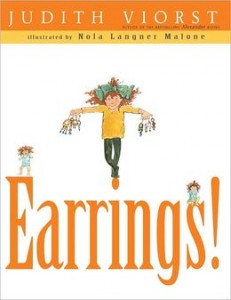 How to talk your parents into letting you get your ears pierced! How to talk your parents into letting you get your ears pierced!
6. A Pig Parade Is A Terrible Idea by Michael Ian Black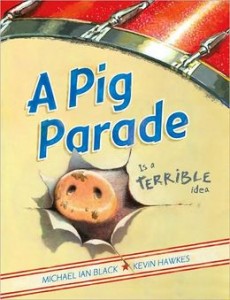 Just as the title states – this book points out all of the reasons why you should not have a pig parade. Excellent example of persuasive writing! Just as the title states – this book points out all of the reasons why you should not have a pig parade. Excellent example of persuasive writing!
Try out a few of these books as you work on preparing your students. Did I persuade you?We Give BooksShare | We Give Books.
Today I came across a fantastic site that gives books to a worthy cause every time you read a book on the site! It is called We Give Books and it is FREE to join. Here is their promotional letter-
Have you heard about the latest We Give Books cause? This fall, join the Bug Squad to raise awareness for the importance of early childhood literacy while having fun and helping to break a world record!Inspired by Ladybug Girl and the Bug Squad, the 2012 Jumpstart’s Read for the Record book written by David Soman and Jacky Davis, We Give Books has created their own Bug Squad to give us new ways to read, give, and share reading this fall! Jumpstart’s Read for the Record is a single day of awareness on October 4, when we’ll set a new world record for the most people reading the same book on the same day. There are tons of Bug Squad resources to help your kids get excited about reading and to help you plan your own record-setting celebration.We Give Books is a fantastic resource for parents, teachers, and anyone who loves to read children’s books. They have a free online library of over 150 outstanding children’s books available at www.wegivebooks.org, including some of our favorites, like the Llama Llama and Skippyjon Jones books, and DK science books. The best part is, your reading will directly impact the great work of non-profit organizations around the world!So, head over to www.wegivebooks.org to Join the Bug Squad and find out more about this wonderful initiative, and start reading and giving!
Add A Literature Link to Your Math LessonsWe have been focusing on read alouds and how important they are in developing Reading Comprehension Strategies but we have some great books in our library to help enrich your math concepts as well. Adding a story to your math lessons can really engage the students and give concrete examples of using math in daily life. A story can help reinforce a concept you are trying to teach or introduce a new strategy. Here are a few examples of how you can integrate literature into your math lessons before, during or after you have taught the concept.And remember – these books are right here in our Quest Library or in our Guided Reading Sets- Count to A Million by Jerry Pallotta – number sense, place value and counting Count to A Million by Jerry Pallotta – number sense, place value and counting

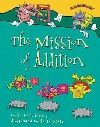 Brian Cleary writes rhyming verse to introduce the concepts of addition and subtraction. Kindergarten and 1st graders will love the funny rhymes and great illustrations. Stop along the way to solve the problems!
Brian Cleary writes rhyming verse to introduce the concepts of addition and subtraction. Kindergarten and 1st graders will love the funny rhymes and great illustrations. Stop along the way to solve the problems!
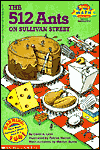 The 512 Ants on Sullivan Street is a great book for reinforcing the concept that repeated addition is the same as multiplication and it is a fun story, too! There are some great lesson plans on line for this book!
The 512 Ants on Sullivan Street is a great book for reinforcing the concept that repeated addition is the same as multiplication and it is a fun story, too! There are some great lesson plans on line for this book!
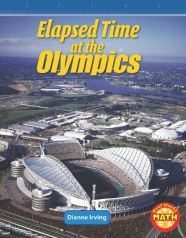 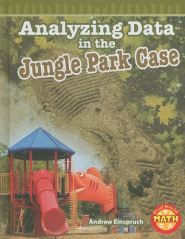 Elapsed Time at the Olympics is a fun way to get kids thinking about elapsed time as the learn interesting facts about the Olympics. As you work your way through the book the students can stop and figure out the questions. I know that several teachers have been looking for new ways to help teach elapsed time!
Analyzing Data in the Jungle Park Case gets kids interested in graphing and looking at information as they solve real life problems. Higher Level Thinking Skills come into play with this one! Good for 4th and 5th grades. Elapsed Time at the Olympics is a fun way to get kids thinking about elapsed time as the learn interesting facts about the Olympics. As you work your way through the book the students can stop and figure out the questions. I know that several teachers have been looking for new ways to help teach elapsed time!
Analyzing Data in the Jungle Park Case gets kids interested in graphing and looking at information as they solve real life problems. Higher Level Thinking Skills come into play with this one! Good for 4th and 5th grades.
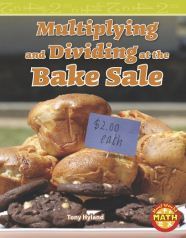 There are even good books for the upper grades. Multiplying and Dividing at the Bake Sale is an interactive book that allows you to stop and solve problems as you read. This type of book is perfect for creating tasks for your students and increasing their Depth of Knowledge!
There are even good books for the upper grades. Multiplying and Dividing at the Bake Sale is an interactive book that allows you to stop and solve problems as you read. This type of book is perfect for creating tasks for your students and increasing their Depth of Knowledge!
Kid-friendly, real-life situations put math into action. By showing how we use math every day, teachers finally have an answer to the question, “But when will I ever use this?”This is just a little sampling of the great resources we have in our library to help our teachers make math more interesting and engaging! Look for more on this topic later! Happy Reading!A Follow-Up to Number SenseA few posts ago I talked about Number Sense and shared a few ideas on how to reinforce this skill with your students. As I have been visiting classrooms lately I have been excited to see many of you using the Number Of The Day activity. Understanding exactly what a number is and how to compose and decompose that number is a foundational skill. If we can teach our kindergarteners and first graders that a number is so much more than just a digit we make the job of computation in the upper grades more meaningful. It is great to see these young mathematicians complete their number of the day by demonstrating expanded notation, place value, tally marks, arrays, even and odd, 10 more, 10 less,…..etc. Our fantastic Intervention team has even introduced Number of the Day to their students.Here is an example from Mrs. Hutchinson’s 3rd grade classroom.
|
|
